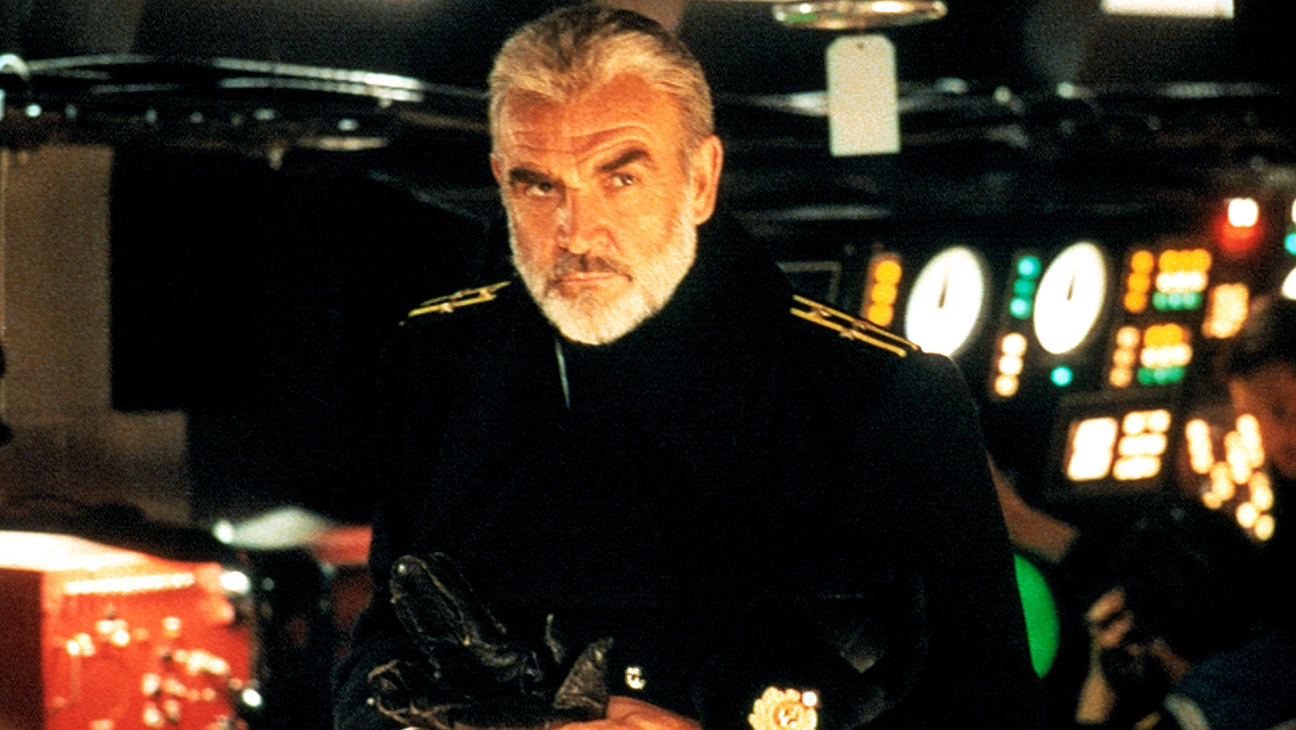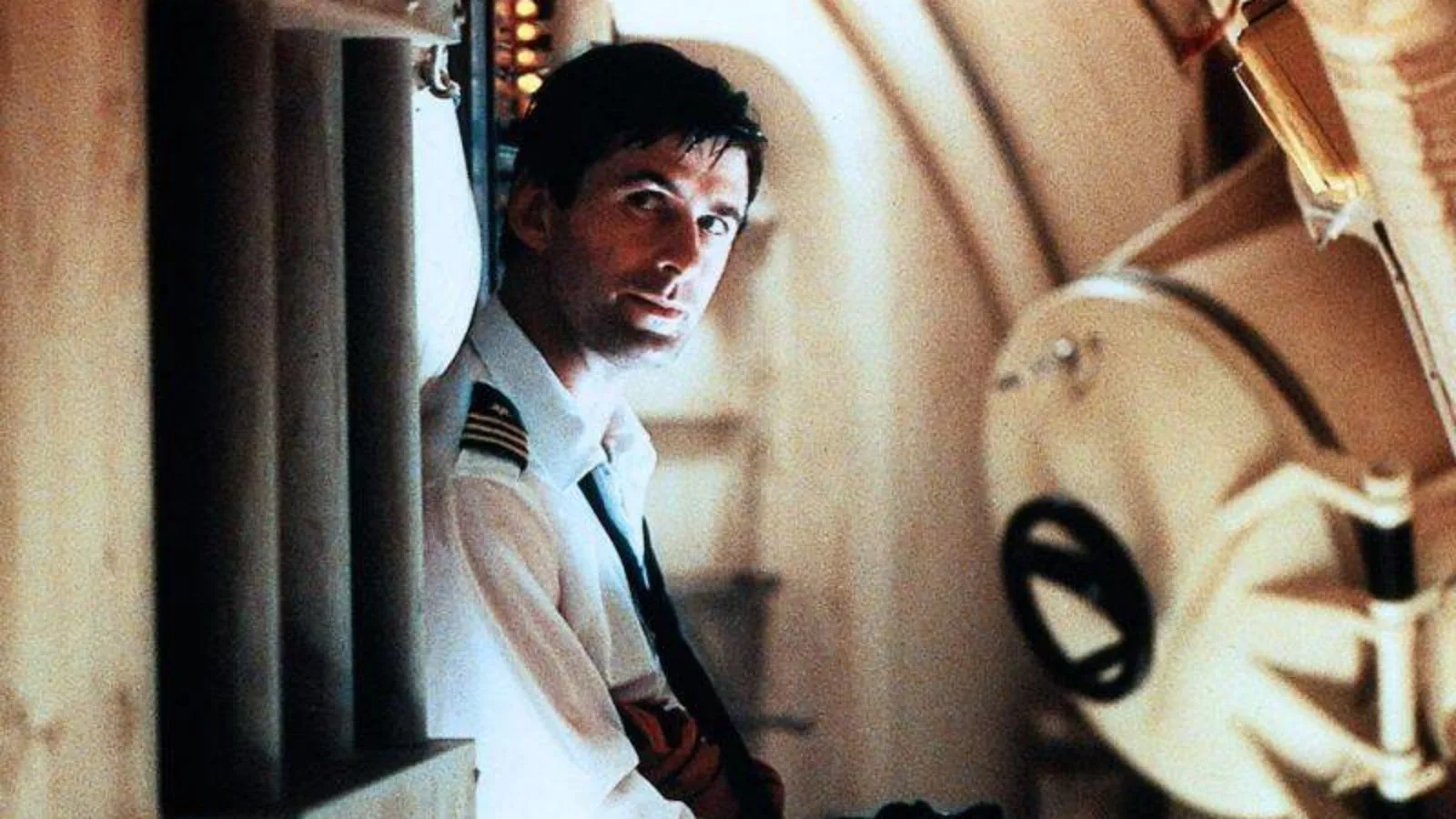The Hunt for Red October
- quoctinh
- November 21, 2024

The Hunt for Red October (1990): A Thrilling Submarine Cat-and-Mouse Game
Introduction
Based on Tom Clancy’s best-selling novel, The Hunt for Red October, directed by John McTiernan, is a gripping Cold War thriller that blends naval strategy with political intrigue. Released in 1990, the film stars Sean Connery as Marko Ramius, a renegade Soviet submarine captain, and Alec Baldwin as Jack Ryan, a CIA analyst racing to decode his motives. With its blend of tension, intelligence, and action, the film is a classic of the military-thriller genre, showcasing the high-stakes chess game of underwater warfare during a period of global uncertainty.
Plot Summary
The story unfolds in 1984, during the height of the Cold War. Captain Marko Ramius (Sean Connery) takes command of the Red October, a state-of-the-art Soviet Typhoon-class submarine equipped with a revolutionary silent propulsion system known as a “caterpillar drive.” This technology renders the submarine virtually undetectable, giving it the potential to strike undetected and altering the balance of power between the Soviet Union and the United States.
Ramius, disillusioned with the Soviet regime, decides to defect to the United States. To cover his intentions, he sends a letter to Soviet high command declaring his intent to launch a nuclear strike on the United States. This prompts the Soviets to deploy their fleet to hunt down the Red October and prevent Ramius from carrying out his supposed plan.
The United States becomes aware of the Red October‘s movements and interprets them as a potential first strike. Enter CIA analyst Jack Ryan (Alec Baldwin), who theorizes that Ramius is not an aggressor but a defector. Ryan must convince skeptical U.S. military leaders of his theory while racing against time to locate the Red October before the Soviets can destroy it.
As tensions rise, a deadly game of cat and mouse unfolds in the North Atlantic, with both Soviet and American forces vying to intercept the submarine. The climax sees Ryan boarding the Red October, where he and Ramius face a final threat that could jeopardize the entire operation.
Themes
- Loyalty and Betrayal
The film explores themes of loyalty and betrayal on multiple levels. Ramius’s defection is a betrayal of his homeland, but it is motivated by a higher loyalty to his personal ideals and a desire to prevent nuclear war. Similarly, Jack Ryan’s loyalty to his country drives his risky and unconventional efforts to decode Ramius’s intentions. - Cold War Tensions
The film is steeped in the paranoia and mistrust of the Cold War, showcasing the brinkmanship and hair-trigger responses that characterized the era. Both the Americans and Soviets operate under incomplete information, leading to escalating tension and near-disaster. - Trust and Understanding
At its core, The Hunt for Red October is about the challenge of building trust in a world of secrecy and suspicion. Ryan’s belief in Ramius’s intentions highlights the power of intuition and reasoning over blind adherence to protocol.
Sean Connery and Alec Baldwin’s Performances
Sean Connery delivers a commanding performance as Marko Ramius, imbuing the character with gravitas and moral complexity. His portrayal captures Ramius’s quiet resolve, blending the steeliness of a military leader with the vulnerability of a man risking everything for his principles. Connery’s natural charisma ensures that viewers root for Ramius, even as his motives remain ambiguous for much of the film.
Alec Baldwin shines as Jack Ryan, portraying the CIA analyst as an everyman thrust into extraordinary circumstances. Baldwin balances Ryan’s intellect, determination, and occasional nervousness, making him a relatable and compelling protagonist. His chemistry with Connery anchors the film, especially in the tense yet respectful interactions between Ryan and Ramius.
The supporting cast, including Scott Glenn as the stoic American submarine captain Bart Mancuso and Sam Neill as Ramius’s loyal second-in-command Vasily Borodin, adds depth to the story. Each character brings a unique perspective to the unfolding drama, enriching the film’s portrayal of the political and personal stakes involved.
Direction and Cinematography
John McTiernan, known for his work on action films like Die Hard and Predator, brings his expertise in pacing and tension to The Hunt for Red October. The underwater sequences are masterfully directed, with McTiernan using sound design, tight framing, and strategic lighting to convey the claustrophobic and high-stakes environment of submarine warfare.
Jan de Bont’s cinematography captures the stark contrast between the vast, icy expanse of the North Atlantic and the confined, mechanical interiors of the submarines. The visuals emphasize the isolation and vulnerability of the characters, heightening the suspense as the story unfolds.
Musical Score
Basil Poledouris’s score is a standout element of the film, blending orchestral grandeur with militaristic themes that evoke both the Soviet and American perspectives. The music heightens the tension and drama of key moments, such as the eerie underwater confrontations and the climactic action sequences. The choral opening piece, reminiscent of Russian Orthodox hymns, sets the tone for the film’s exploration of Cold War ideology and individual morality.
Critical Reception and Legacy
The Hunt for Red October was a critical and commercial success, earning praise for its intelligent script, taut direction, and strong performances. It grossed over $200 million worldwide and received an Academy Award for Best Sound Editing, reflecting its technical achievements.
The film is often cited as one of the best adaptations of Tom Clancy’s work and a defining entry in the submarine thriller genre. Its influence can be seen in subsequent films and series that explore naval warfare and Cold War tensions.
Conclusion
The Hunt for Red October remains a masterful blend of action, strategy, and drama, capturing the peril and complexity of Cold War-era military conflicts. Through its compelling characters, sharp storytelling, and immersive visuals, the film offers a thrilling and thought-provoking experience that continues to resonate with audiences. It is a testament to the power of trust, intellect, and courage in navigating the treacherous waters of war and diplomacy.











